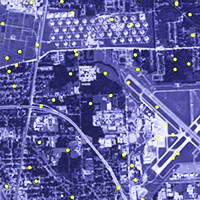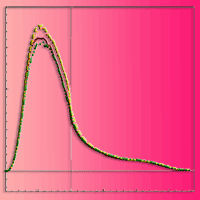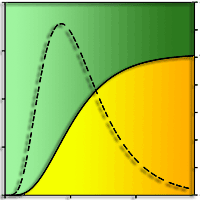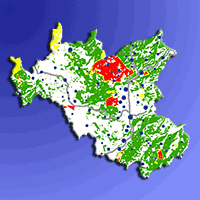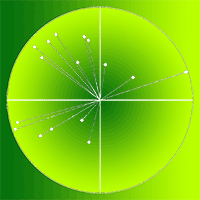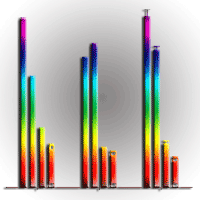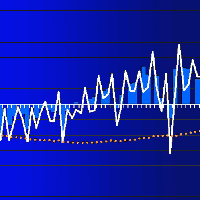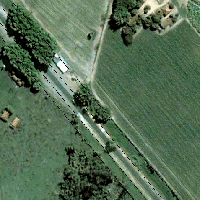
Roadside vegetation: estimation and potential for carbon sequestration
AM Da Silva (1) , C Braga Alves (1), SH Alves (2)
iForest - Biogeosciences and Forestry, Volume 3, Issue 5, Pages 124-129 (2010)
doi: https://doi.org/10.3832/ifor0550-003
Published: Sep 27, 2010 - Copyright © 2010 SISEF
Research Articles
Abstract
The present paper reports the assessment of the vegetation occupancy rate of the roadside, through analysis of aerial photographs. Using such value the potential of these areas to be employed as carbon (C) sinks was also assessed. Moreover, for the areas suitable for afforestation, the potential for carbon sequestration was estimated considering different species of vegetation, both native (scenario 1) and exotic (formed by Pinus sp. and Eucalyptus sp. - scenario 2). The study was carried out through GIS techniques and two regions were considered. A set of equations was used to estimate the rate of occupancy over the study areas, as well as amounts of fixed C under the above scenarios. The average occupancy rate was 0.06%. The simulation showed a higher potential for C sequestration in scenario 2, being the estimated amounts of CO2 sequestered from the atmosphere per km of roadside: 131 tons of CO2 km-1 of highway to native species and 655 tons of CO2 km-1 of highway for exotic species (over period of 10 years for both estimates). If we consider the whole road network of the São Paulo State (approximately 190 000 km) and that a considerable part of this road work is suitable to receive this kind of service, it is possible to predict the very high potential for C sequestration if managers and planners consider roadside as area for afforestation.
Keywords
Carbon sequestration, Roadside vegetation, Potential for C sequestration, Afforestation, Forest management
Authors’ Info
Corresponding author
Paper Info
Citation
Da Silva AM, Braga Alves C, Alves SH (2010). Roadside vegetation: estimation and potential for carbon sequestration. iForest 3: 124-129. - doi: 10.3832/ifor0550-003
Paper history
Received: Mar 11, 2010
Accepted: Jun 16, 2010
First online: Sep 27, 2010
Publication Date: Sep 27, 2010
Publication Time: 3.43 months
Copyright Information
© SISEF - The Italian Society of Silviculture and Forest Ecology 2010
Open Access
This article is distributed under the terms of the Creative Commons Attribution-Non Commercial 4.0 International (https://creativecommons.org/licenses/by-nc/4.0/), which permits unrestricted use, distribution, and reproduction in any medium, provided you give appropriate credit to the original author(s) and the source, provide a link to the Creative Commons license, and indicate if changes were made.
Web Metrics
Breakdown by View Type
Article Usage
Total Article Views: 59517
(from publication date up to now)
Breakdown by View Type
HTML Page Views: 48682
Abstract Page Views: 3331
PDF Downloads: 5995
Citation/Reference Downloads: 35
XML Downloads: 1474
Web Metrics
Days since publication: 5574
Overall contacts: 59517
Avg. contacts per week: 74.74
Citation Metrics
Article Citations
Article citations are based on data periodically collected from the Clarivate Web of Science web site
(last update: Mar 2025)
Total number of cites (since 2010): 14
Average cites per year: 0.88
Publication Metrics
by Dimensions ©
Articles citing this article
List of the papers citing this article based on CrossRef Cited-by.
References
Anuário estatístico dos transportes terrestres. Agência nacional de transportes terrestres.
Gscholar
Faixas de domínio: estimativa de ocupação e potencial de sequestro de carbono. Monograph (undergraduation in environmental engineering). Universidade estadual paulista Júlio de Mesquita Filho, Sorocaba, SP, Brazil, pp. 21.
Gscholar
Estoque e incremento de carbono em florestas e povoamentos de espécies arbóreas com ênfase na floresta atl’ntica do sul do Brasil. Colombo, Paranà, Brazil. Embrapa Florestas, pp.165.
Gscholar
Changing sediment dynamics due to natural reforestation in the Dragonja catchment, S.W. Slovenia. Catena 78: 60 - 71.
Gscholar
Relatório da supervisão de segurança. Departamento de estradas de Rodagem, Minas Gerais, Brazil.
Gscholar
Malha viária do estado de São Paulo. Departamento de estradas de Rodagem, Minas Gerais, Brazil.
Gscholar
Manual para ordenamento do uso do solo nas faixas de domínio e lindeiras das rodovias federais (2nd edn). Departamento Nacional de Infra-Estrutura de Transportes, Diretoria de planejamento e pesquisa, Coordenação geral de estudos e pesquisa. Instituto de pesquisas, Rodoviárias, Rio de Janeiro, Brazil, pp. 106.
Gscholar
Formas de controle da erosão linear. Empresa brasileira de pesquisa agropecuaria.
Gscholar
ArcGIS 9.0 - Getting started with ArcGIS. User´s manual. Environmental systems research institute, Redlands, CA, USA, pp. 265.
Gscholar
O papel do setor florestal na formação de corredores ecológicos. Belo Horizonte, Minas Gerais, Brazil.
Gscholar
Brazilian institute for geography and statistics. Cidades@, o Brasil município por município.
Gscholar
Integração de barreiras acústicas no contexto urbano. Maceió.
Gscholar
Natural resources Canada. Air photos 101 - principles of aerial photography. Introduction to air photo interpretation. National air photo library.
Gscholar
The Roadside development design manual. Oregon department of transportation. pp. 129.
Gscholar
Plantio e exploração do Pinus abre novos mercados e reduz a extração de espécies nativas. FAPESP 115.
Gscholar
O desafio climático do século XXI. Programa das nações unidas para o desenvolvimento.
Gscholar
Sequestro de carbono: uma experiência concreta. Instituto Ecológica. Palmas, Tocantins, Brazil.
Gscholar
Potencial de sequestro de carbono pela agricultura brasileira e a mitigação do efeito estufa. Passo Fundo, Embrapa Trigo, pp. 8.
Gscholar


